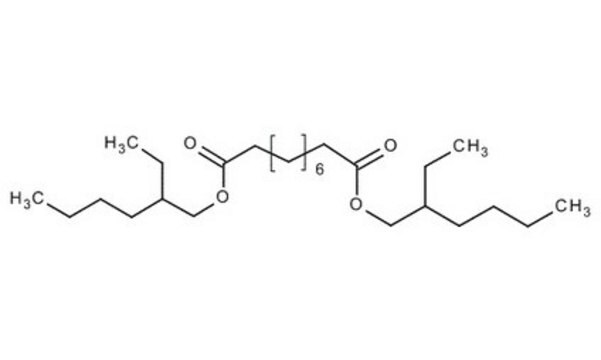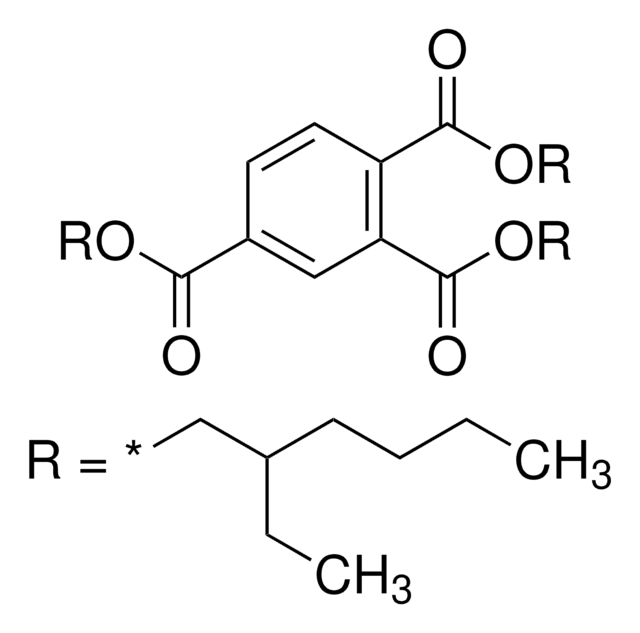84822
Bis(2-ethylhexyl) sebacate
≥97.0% (GC)
Synonym(s):
Di(2-ethylhexyl) sebacate, Sebacic acid di(2-ethylhexyl) ester, ‘Dioctyl’ sebacate
About This Item
Recommended Products
Quality Level
Assay
≥97.0% (GC)
form
liquid
refractive index
n20/D 1.450 (lit.)
bp
212 °C/1 mmHg (lit.)
density
0.914 g/mL at 25 °C (lit.)
functional group
ester
SMILES string
CCCCC(CC)COC(=O)CCCCCCCCC(=O)OCC(CC)CCCC
InChI
1S/C26H50O4/c1-5-9-17-23(7-3)21-29-25(27)19-15-13-11-12-14-16-20-26(28)30-22-24(8-4)18-10-6-2/h23-24H,5-22H2,1-4H3
InChI key
VJHINFRRDQUWOJ-UHFFFAOYSA-N
Looking for similar products? Visit Product Comparison Guide
Application
Storage Class Code
10 - Combustible liquids
WGK
awg
Personal Protective Equipment
Choose from one of the most recent versions:
Already Own This Product?
Find documentation for the products that you have recently purchased in the Document Library.
Customers Also Viewed
Our team of scientists has experience in all areas of research including Life Science, Material Science, Chemical Synthesis, Chromatography, Analytical and many others.
Contact Technical Service






![Sodium tetrakis[3,5-bis(trifluoromethyl)phenyl]borate Selectophore™](/deepweb/assets/sigmaaldrich/product/structures/251/439/7a621e74-bfd1-4a43-833c-09adfcc1e0b3/640/7a621e74-bfd1-4a43-833c-09adfcc1e0b3.png)


